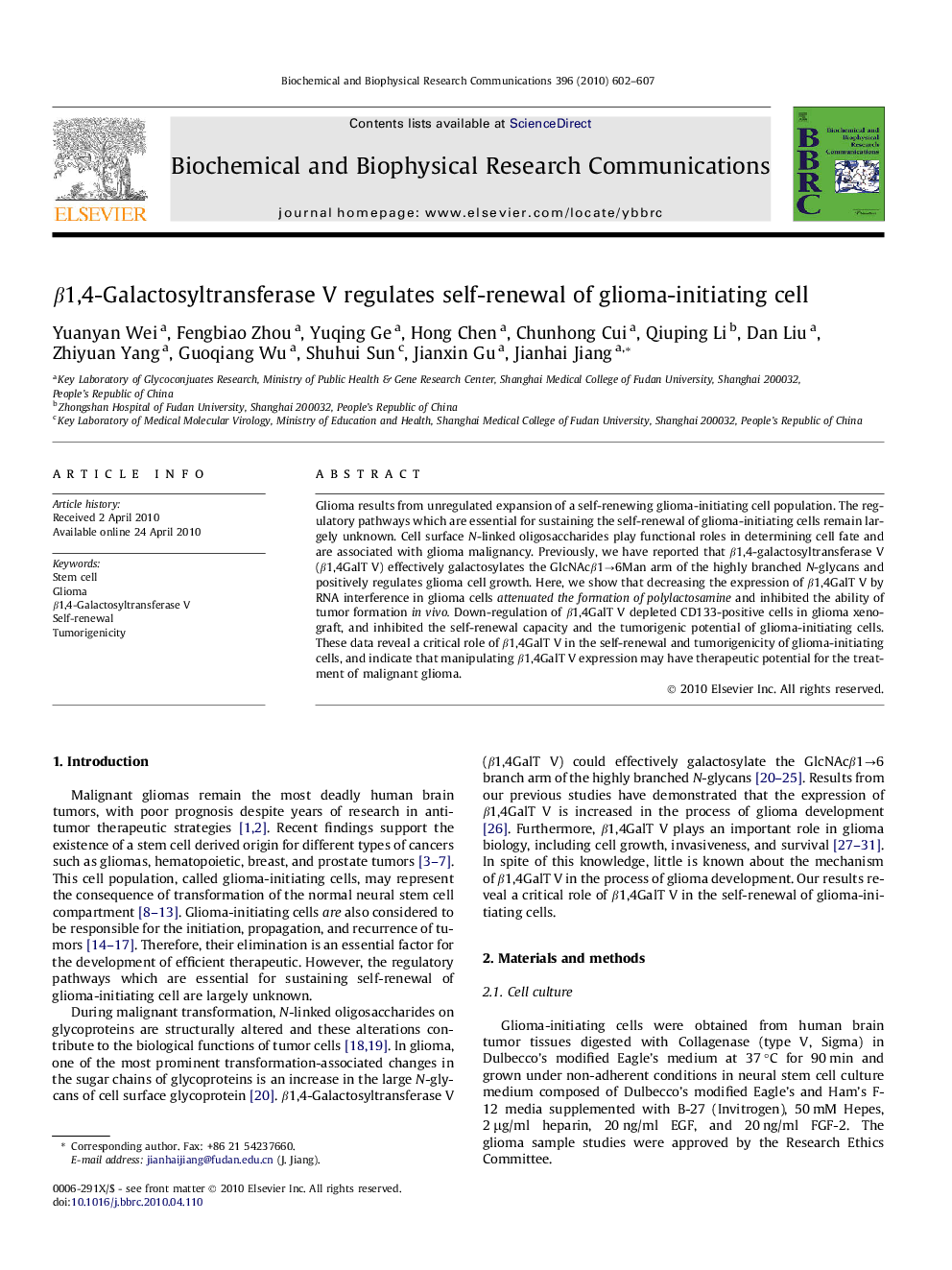| Article ID | Journal | Published Year | Pages | File Type |
|---|---|---|---|---|
| 10764680 | Biochemical and Biophysical Research Communications | 2010 | 6 Pages |
Abstract
Glioma results from unregulated expansion of a self-renewing glioma-initiating cell population. The regulatory pathways which are essential for sustaining the self-renewal of glioma-initiating cells remain largely unknown. Cell surface N-linked oligosaccharides play functional roles in determining cell fate and are associated with glioma malignancy. Previously, we have reported that β1,4-galactosyltransferase V (β1,4GalT V) effectively galactosylates the GlcNAcβ1â6Man arm of the highly branched N-glycans and positively regulates glioma cell growth. Here, we show that decreasing the expression of β1,4GalT V by RNA interference in glioma cells attenuated the formation of polylactosamine and inhibited the ability of tumor formation in vivo. Down-regulation of β1,4GalT V depleted CD133-positive cells in glioma xenograft, and inhibited the self-renewal capacity and the tumorigenic potential of glioma-initiating cells. These data reveal a critical role of β1,4GalT V in the self-renewal and tumorigenicity of glioma-initiating cells, and indicate that manipulating β1,4GalT V expression may have therapeutic potential for the treatment of malignant glioma.
Related Topics
Life Sciences
Biochemistry, Genetics and Molecular Biology
Biochemistry
Authors
Yuanyan Wei, Fengbiao Zhou, Yuqing Ge, Hong Chen, Chunhong Cui, Qiuping Li, Dan Liu, Zhiyuan Yang, Guoqiang Wu, Shuhui Sun, Jianxin Gu, Jianhai Jiang,
